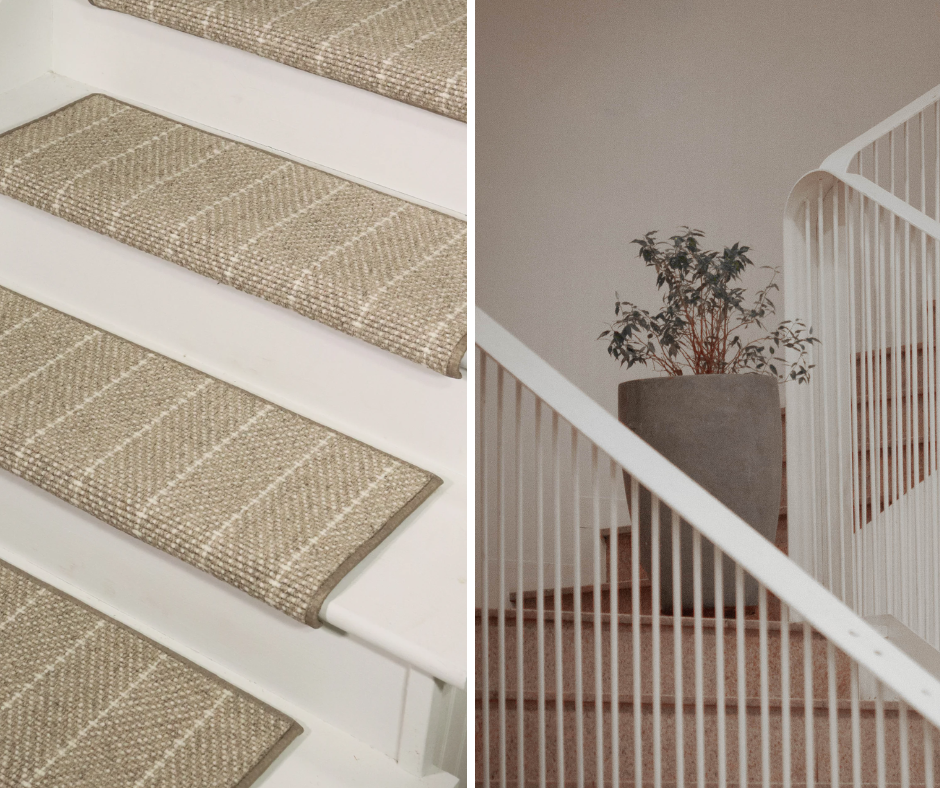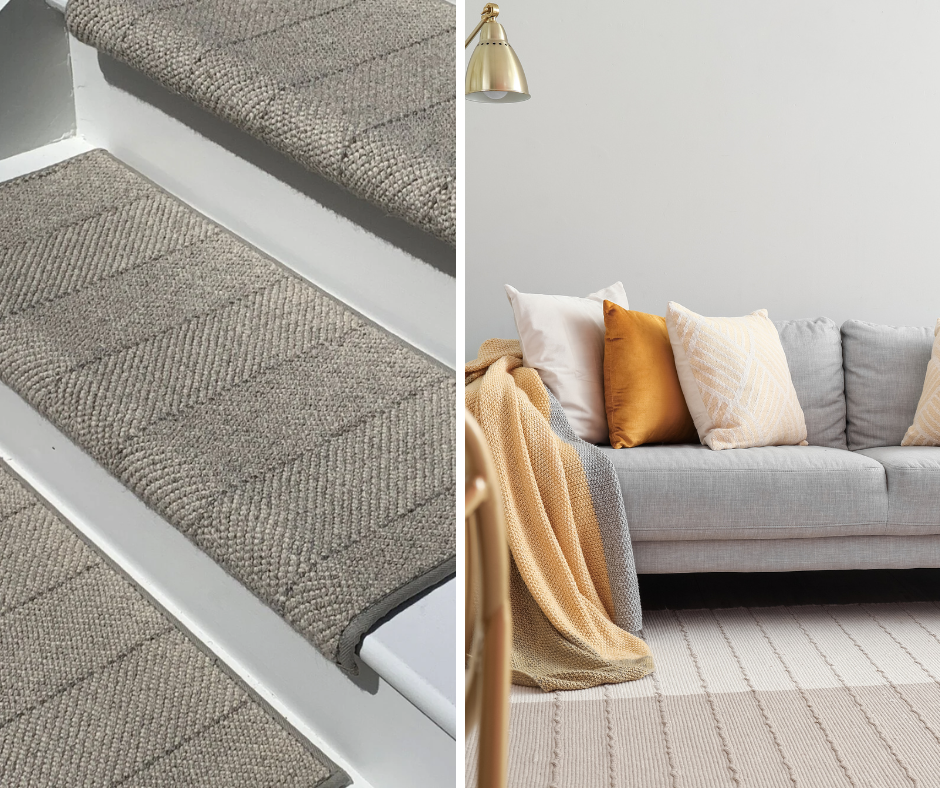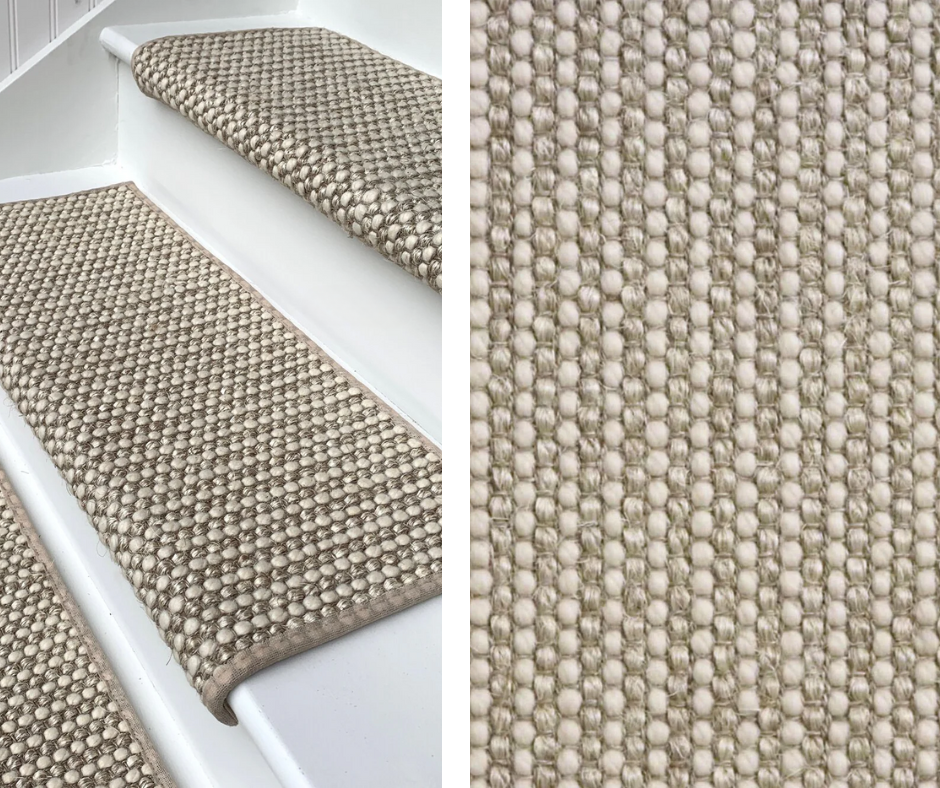When it comes to enhancing the beauty and safety of your staircase, selecting the best runners for stairs treads can make all the difference.
Carpet stair landings can be seamlessly integrated with these runners, providing a cohesive and stylish look throughout your entire staircase.
Not only do these runners protect your stairs, but they also add a touch of elegance and comfort to your home.
Whether you’re covering hardwood or already have a carpeted staircase, the right runner can elevate your space.
What Are the Best Materials for Stair Runners and Treads?
Choosing the best material is key to finding a runner that suits your home.
Natural fibers like wool and sisal offer durability and a cozy feel, while synthetic fibers such as nylon provide easy maintenance and resilience.
Wool is known for its long-lasting quality.
Wool is naturally resistant to stains, making it a great choice for busy households.
Sisal is an eco-friendly option that brings a natural look to your stairs.
Sisal is ideal for a rustic or coastal vibe.
Synthetic fibers like nylon and polypropylene are perfect for high-traffic areas due to their strength and easy care.
Whether you’re considering a carpet runner over carpeted stairs or looking to protect hardwood steps, each material offers unique benefits to suit your needs.
How Do You Choose the Right Stair Runner for High-Traffic Areas?
For stairs that endure heavy foot traffic, it’s important to pick a runner that not only looks good but also stands up to daily use.
Durable options like wool or synthetic fibers are ideal because they maintain their appearance over time.
Consider the pile height too.
Lower piles are easier to clean and less likely to show wear.
If you’re layering a stair runner over carpet, make sure the runner is securely fastened to prevent slipping and ensure a cohesive look.
What Are the Benefits of Using Stair Treads Over Traditional Stair Runners?
While traditional runners cover the full width of each step, stair treads offer a more flexible and often easier-to-install alternative.
Treads are typically placed in the center of each step.
Treads are available in a variety of sizes to match your stairs.
Here’s why stair treads might be a better choice for you.
Easy Installation: Many treads come with adhesive backing, making them simple to apply.
Minimal Damage: Since they don’t require nails or tacks, treads cause less wear on your stairs.
Affordable: Stair treads are generally less expensive than full runners, especially if you’re doing a DIY project.
Whether you’re installing treads or considering a carpet runner over carpeted stairs, both options can significantly improve the safety and style of your home.
How Do You Install Stair Runners Yourself?
Installing a stair runner is a project that many homeowners can tackle themselves with the right tools.
Here’s a basic guide.
Measure Your Stairs: Accurate measurements are essential for ordering the correct length of runner.
Select Your Runner: Choose a runner that matches your home’s style and can handle daily wear.
Prepare the Stairs: Clean the surface thoroughly to help the runner adhere properly.
Install the Runner: Start from the top step, using carpet tacks, glue, or double-sided tape to secure the runner in place.
If you’re installing a carpet runner over carpeted stairs, double-sided tape or a specialized carpet stapler can help keep everything in place, ensuring a snug fit.
Steps to Success
To find the best runners for stairs treads, consider the material, traffic level, and installation method that suits your home.
Whether you choose a full runner or stair treads, making the right choice will enhance both the safety and luxury of your staircase.
Remember, it’s not just about protecting your stairs—it’s about adding a touch of comfort and style to your home.




